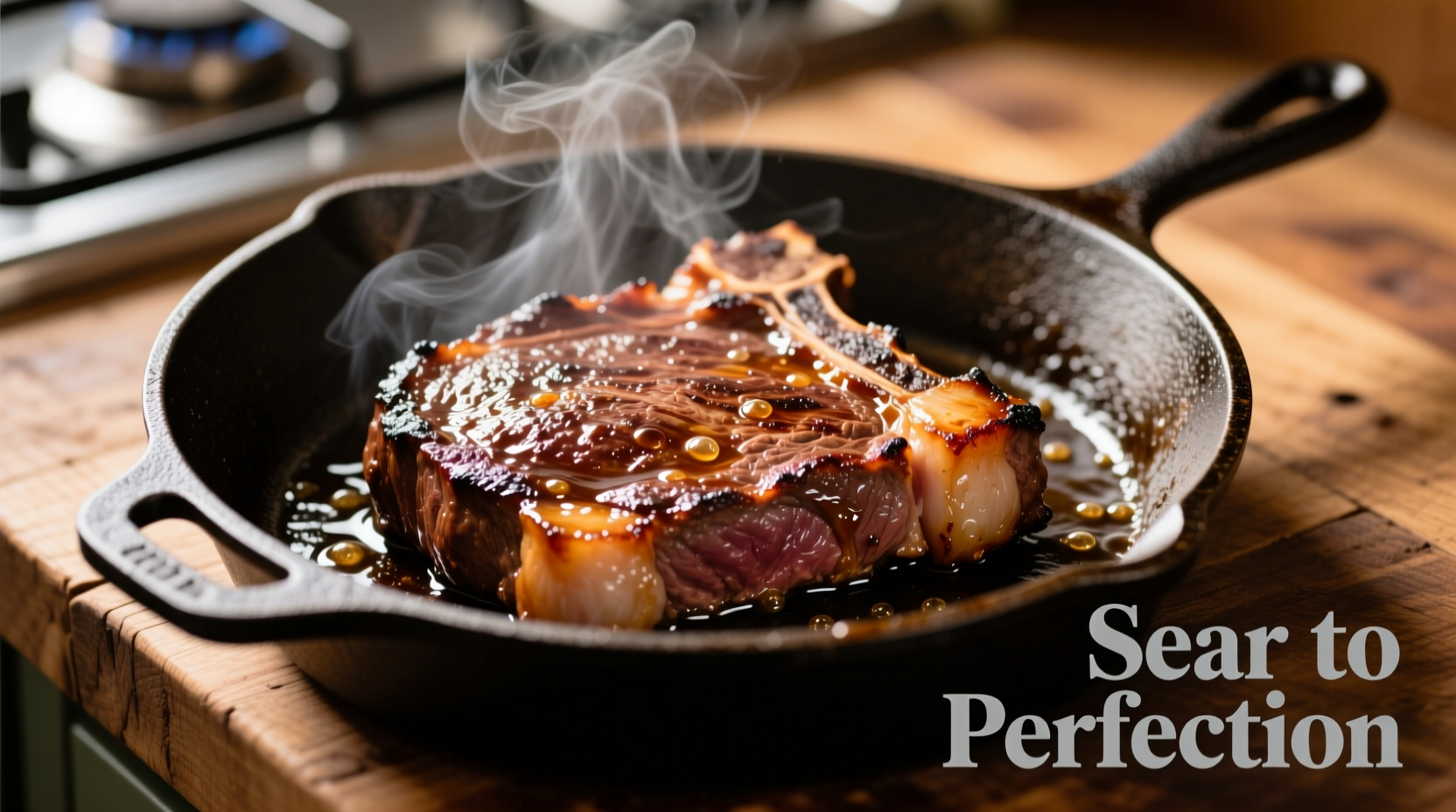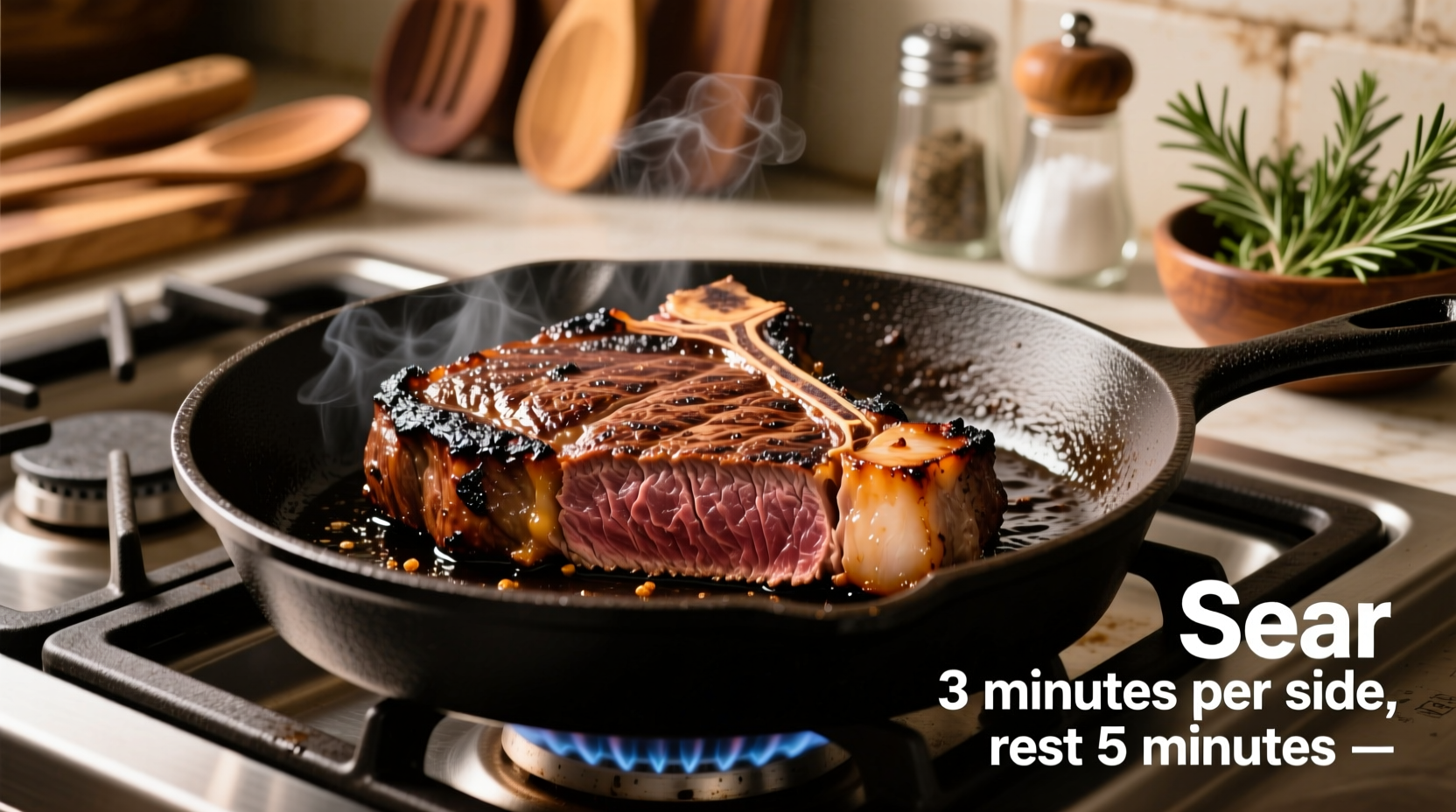Chuck steak often gets overlooked as a tough cut, but with the right stove-top technique, it transforms into a deeply flavorful, surprisingly tender meal. This guide reveals the precise method professional chefs use to maximize this affordable cut's potential—no special equipment required.
Why Chuck Steak Needs Special Stove Cooking
Unlike tenderloin or ribeye, chuck steak comes from the shoulder area of the cow, containing significant connective tissue and marbling. According to Texas A&M University's meat science department, this cut contains 7-10% more collagen than premium steaks, which requires specific cooking to break down properly. The stove provides controlled heat essential for transforming this budget-friendly cut into a restaurant-quality meal.
Preparation: Setting Up for Success
Timing matters: Remove your chuck steak from the refrigerator 45-60 minutes before cooking. This critical step, confirmed by USDA food safety guidelines, allows for even cooking and prevents the exterior from overcooking while the interior reaches proper temperature.
Seasoning strategy:
- Pat the steak completely dry with paper towels
- Apply 1 teaspoon kosher salt per pound (minimum 40 minutes before cooking)
- Add freshly cracked black pepper just before cooking
Drying the surface creates optimal conditions for the Maillard reaction—the chemical process responsible for that desirable browned crust. As explained in the Journal of Agricultural and Food Chemistry, this reaction begins at 285°F (140°C) and creates over 600 flavor compounds that elevate your steak's taste profile.

Stove Cooking Process: Step-by-Step
Equipment check: Use a heavy-bottomed skillet (cast iron preferred) that retains heat evenly. Preheat your stove to medium-high (approximately 400-450°F) for 5 minutes before adding oil.
| Cooking Stage | Heat Level | Time | Internal Temp |
|---|---|---|---|
| Searing | Medium-high | 3-4 min/side | 110-120°F |
| Finishing | Medium-low | 6-8 min/side | 125-135°F |
| Resting | None | 10 min | Rises 5-10°F |
The Searing Phase
Add 1 tablespoon high-smoke point oil (avocado or grapeseed) to your preheated skillet. When the oil shimmers but doesn't smoke, place the steak in the pan. You should hear an immediate sizzle. Resist the urge to move the steak for the first 3 minutes—this creates an even crust.
The Finishing Phase
After flipping, reduce heat to medium-low and add flavor enhancers:
- 2 tablespoons unsalted butter
- 2 crushed garlic cloves
- 3 sprigs fresh rosemary or thyme
Tilt the pan and spoon the melted butter continuously over the steak for the remaining cooking time. This basting technique, recommended by the Culinary Institute of America, infuses flavor while gently cooking the interior without over-browning the exterior.
Avoiding Common Chuck Steak Mistakes
Mistake: Cooking straight from the refrigerator
Solution: Always allow 45-60 minutes for the steak to come to room temperature
Mistake: Moving the steak too soon during searing
Solution: Let it develop a proper crust before attempting to flip
Mistake: Cutting into the steak immediately after cooking
Solution: Rest for 10 minutes minimum to allow juices to redistribute
Serving Your Perfectly Cooked Chuck Steak
When slicing, cut against the grain—perpendicular to the muscle fibers. This shortens the tough fibers, making each bite more tender. For chuck steak, look for the direction of the grain and slice across it at a 90-degree angle.
Pair your steak with simple sides that complement rather than compete with its rich flavor:
- Garlic mashed potatoes
- Roasted root vegetables
- Simple green salad with vinaigrette
Troubleshooting Your Stove-Top Chuck Steak
If your steak is tough: You likely didn't cook it to proper internal temperature. Chuck steak needs to reach at least 135°F to begin breaking down connective tissue. Use an instant-read thermometer for accuracy.
If the exterior burned before interior cooked: Your heat was too high during the finishing phase. Reduce to medium-low after the initial sear.
If the steak sticks to the pan: Your pan wasn't hot enough before adding the steak, or you tried to move it too soon during searing.











 浙公网安备
33010002000092号
浙公网安备
33010002000092号 浙B2-20120091-4
浙B2-20120091-4